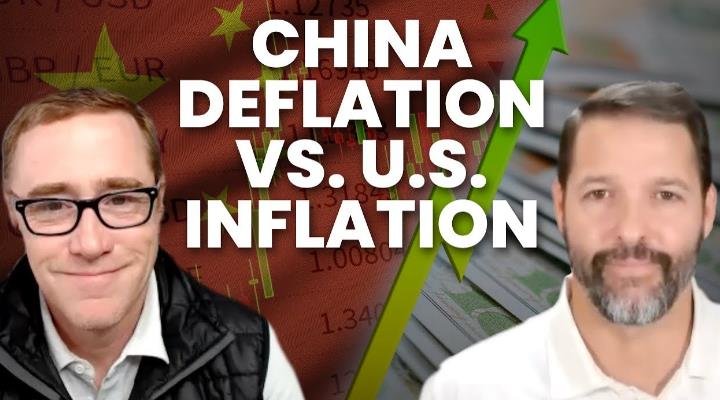Asian markets fell on Thursday, as investors were worried about China’s deflation and the upcoming US inflation report. China’s consumer prices dropped for the first time in a year, while its producer prices continued to decline. The US inflation report, due later on Thursday, is expected to show a slight increase in July, but still remain high. These developments have implications for the global economic recovery and the monetary policy of the major central banks.
China’s Deflation: A Sign of Weak Demand
China reported on Wednesday that its consumer price index (CPI) fell 0.1% year-on-year in July, after rising 1.1% in June. This was the first negative CPI reading since August 2021, and below the market expectations of a 0.3% increase. The main reason for the deflation was a sharp drop in food prices, especially pork, which plunged 43.5% year-on-year due to a recovery in hog production after an outbreak of African swine fever.
China’s producer price index (PPI), which measures the cost of goods at the factory gate, also fell 0.3% year-on-year in July, after dropping 0.4% in June. This was the third consecutive month of negative PPI growth, and below the market expectations of a 0.2% decline. The main reason for the deflation was a slowdown in global demand and commodity prices, as well as the impact of Covid-19 outbreaks and flooding in some parts of China.

China’s deflation indicates that the world’s second-largest economy is facing weak domestic and external demand, as well as supply-side disruptions. This poses a challenge for Beijing, which wants to avoid a deflationary trap that could undermine growth and debt sustainability. Some analysts have called for more fiscal and monetary stimulus to boost consumption and investment, while others have warned of the risks of overheating the property market and creating asset bubbles.
US Inflation: A Test for the Fed
The US will release its inflation report for July later on Thursday, which will be closely watched by investors and policymakers. The US CPI is expected to rise 0.5% month-on-month and 5.3% year-on-year in July, slightly lower than the 0.9% and 5.4% increases in June respectively. The core CPI, which excludes food and energy prices, is expected to rise 0.4% month-on-month and 4.3% year-on-year in July, also slightly lower than the 0.9% and 4.5% increases in June respectively.
The US inflation report will be a test for the Federal Reserve, which has maintained that the current inflation surge is transitory and largely driven by base effects, supply bottlenecks, and pent-up demand. The Fed has said that it will not raise interest rates or taper its bond-buying program until it sees substantial further progress towards its goals of maximum employment and stable prices.
However, some Fed officials have expressed concerns that inflation could prove to be more persistent and widespread than expected, and have called for an earlier start to tapering. Some market participants have also questioned the Fed’s credibility and patience, and have priced in a higher probability of rate hikes next year.
The US inflation report will provide more clues on whether the Fed is right or wrong about its inflation outlook, and whether it needs to adjust its policy stance accordingly. The report will also have implications for the global financial markets, as any change in the Fed’s expectations or actions could affect the US dollar, bond yields, stock prices, and capital flows.
Asian Markets: Under Pressure from China and US
Asian markets were under pressure on Thursday, as they faced headwinds from both China and the US. The MSCI Asia Pacific Index fell 0.6%, reaching its lowest level since July 8. The technology sector was among the worst performers, as it was hit by regulatory crackdowns in China and investment bans in the US.
China’s deflation raised doubts about its economic recovery and policy response, while the US inflation report increased uncertainty about its monetary policy outlook and market reaction. These factors weighed on investor sentiment and risk appetite in Asia, which is already grappling with rising Covid-19 cases and slow vaccination progress.
Asian markets will likely remain volatile and cautious until there is more clarity on China’s economic situation and the US inflation trajectory. Investors will also pay attention to other factors that could affect Asian markets, such as geopolitical tensions, earnings reports, vaccine developments, and policy announcements from other central banks.
